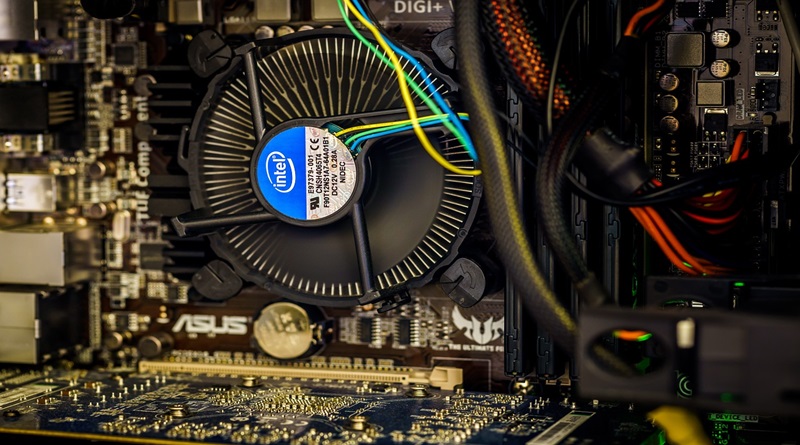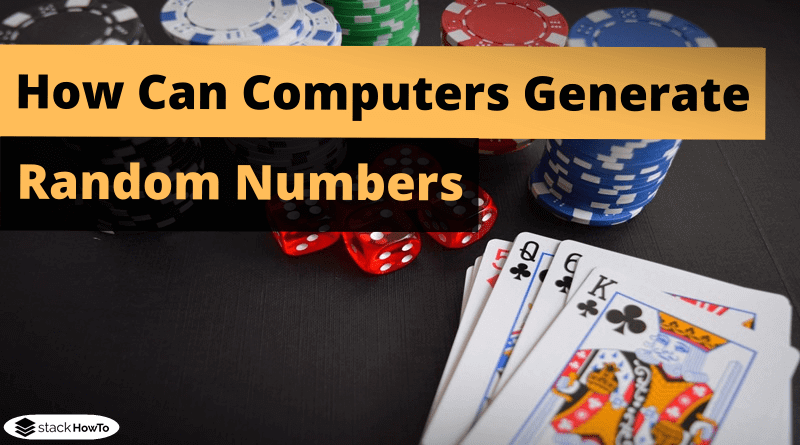How Can Computers Generate Random Numbers
Random numbers are widely used in areas such as cryptography, statistical scanning, fully random design, computer simulation, and other applications. To understand why not all random numbers are really randomly generated and what threat so-called pseudorandom numbers pose, you should first know a little about the random numbers themselves and their use in secure systems.
What is meant by random numbers and a random number generator in computer science?
Random numbers have been used for thousands of years. Whether a coin is thrown or a cube is rolled, the end result has to be left to chance. Software or hardware-based random number generators are basically similar to this process. Here, too, an attempt is made to produce a random and unpredictable result.
A random number is a number that is generated using a large number of numbers and a mathematical algorithm that gives the same probability to all numbers in the given distribution. Random numbers are most often generated with the help of a random number generator. Random numbers have important applications, particularly in cryptography, where they are used as part of encryption mechanisms.
One of the most important requirements for a random number is its absolute independence from other randomly generated numbers. This ensures that no correlation can be established between consecutive numbers. It is also very important that the frequency of occurrence of all random numbers is roughly the same. As a result, it is theoretically not easy to generate a long random number.
How are random numbers generated?
Random numbers can be generated using software and hardware. You may be wondering how a computer can actually generate a random number. Where does this randomness come from? Isn’t it possible that the numbers the computer will generate are predictable if it’s just an algorithm that generates those random numbers? As a rule, random numbers are therefore divided into two groups. depending on how they are generated. A distinction is made between real random numbers and so-called pseudo-random numbers.

Computer-generated random numbers are sometimes referred to as pseudorandom numbers. When generating random numbers, there are many methods such as the linear congruence method for generating pseudorandom numbers. Random numbers generated by hardware or physical phenomena are considered truly random numbers.
To generate a truly random number, the computer measures some kind of physical phenomenon that occurs outside the computer. The entropy is a measure of the randomness in a system. A source of entropy is a process by which the randomness in a physical system is obtained.
For example, the radioactive decay of an atom could be measured by a computer. According to the laws of quantum theory, it is not possible to know exactly when and how this radioactive decay will proceed. So this is essentially pure randomness that occurs in nature. In this case, even a hacker would not be able to predict the course of the radioactive decay of an atom. It therefore cannot determine a random value based on this process.
The most common example, the computer could rely on ambient noise or simply use the exact time you press keys on your keyboard to get unpredictable data or entropy. For example, in this scenario, your computer will notice that you pressed a key exactly 0.2671982 seconds after 14.00. From this, an entropy sequence can be created in a longer observation period, with which a true coincidence can be generated. A human user is not a machine that performs predictable actions. Therefore, a hacker can never predict exactly when a button will be pressed by a human user.
Pseudo-random numbers
Pseudo-random numbers are an alternative to real random numbers. They are generated using software that is based on an algorithm. So in this case a computer can use seed and an algorithm to generate numbers that appear random but are actually predictable. The computer does not collect any random data from the environment.
Particularly powerful algorithms are required in cryptography and in the financial game, for example, the Merkur software for casino players is a milestone in the use of random numbers.
The generation of pseudo-random numbers is not necessarily a disadvantage in every situation. For example, if you’re playing a video game, it doesn’t matter whether the occurrence of events in the game is based on truly random numbers or pseudo-random numbers. If, on the other hand, you use encryption, ideally no pseudo-random numbers should be used that a hacker could crack in an attack.
Pseudo-random number generators use algorithms to create sequences of numbers that look random. However, if a hacker knows the underlying algorithm and startup value used by a pseudo-random number generator, the resulting random numbers are fully predictable.
An encryption algorithm receives a pseudo-random number from an algorithm and generates encryption from it without adding additional randomness. If a hacker knows enough, they can use this information to draw conclusions and determine the pseudorandom number that the encryption algorithm chooses to break the encryption.
Where does the development of random numbers go in the future? – An outlook
Research has made good progress in recent years in developing technologies that can generate and distribute true random numbers. This means that the technology is finally approaching one of the greatest puzzles in cryptography and is on the way to realizing absolutely secure encryption. What is needed for this is a source of true randomness that is fast enough and can be used by any device. This is where quantum mechanics comes in.
Unlike classical physics, quantum physics is basically random. It is the only theory in modern physics that incorporates true randomness. By measuring the unpredictable properties of subatomic particles, these random number generators can use the rules of quantum mechanics to securely encrypt messages and information.
Subatomic particles such as electrons and photons naturally behave in such a way that their behavior cannot be predicted. Two photons emitted by the same atom at different times but under the same conditions can behave differently and there is no way to predict these behaviors in advance. This means that the result of the behavior of these photons cannot be predicted. This unpredictability is critical to the development of a random number generator.
Quantum random number generators use these quantum random properties to generate truly random numbers. In addition, the so-called Quantum Random Number Generators (QRNG) have the advantage that they are insensitive to environmental disturbances compared to conventional random sources and enable the status to be checked in real-time.





